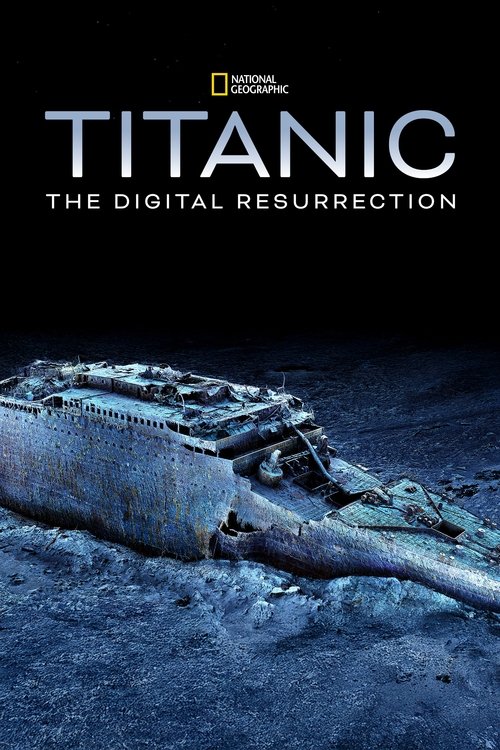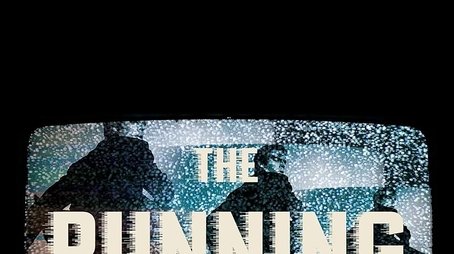
Ask Your Own Question
What is the plot?
Sorry, we aren't able to watch and write up a full detailed plot yet. Check back in a few days.
More Movies Like This
Browse All Movies →
What is the ending?
The ending of Titanic: The Digital Resurrection shows the Titanic being violently torn apart as it sinks, with the ship's engineers heroically maintaining power in the boiler rooms to keep the lights and wireless distress signals functioning until the final moments. The digital reconstruction reveals that the ship's hull did not split cleanly but was ripped apart amid first-class cabins, illustrating the ship's tragic disintegration and the bravery of those who stayed behind.
Expanded narrative ending scene by scene:
As the film reaches its conclusion, the digital twin of Titanic vividly recreates the ship's catastrophic breakup. The scene opens beneath the waves, where the wreck's colossal LED volume stage reveals the bow and stern fragments loosely scattered on the ocean floor. This disarray highlights the violent forces at play as the Titanic was torn asunder.
The camera moves into the boiler rooms, focusing intently on boiler room two. Here, the filmmakers identify a steam valve left open, corroborating eyewitness testimony that engineers stayed at their posts for over two hours after the iceberg collision. These men tirelessly shoveled coal into the furnaces, ensuring that steam pressure was maintained to power the ship's lighting and wireless systems. This act of courage provided critical lighting for launching lifeboats and allowed distress signals to be sent, likely saving hundreds of lives.
Moving up into the first-class section, the digital model shows the brutal tearing apart of cabins where prominent passengers sought refuge. The ship's hull fragments are reconstructed like a puzzle, revealing the chaotic nature of the breakup rather than a clean split. The violent ripping through these elegant spaces underscores the sudden and brutal end of what was once the grandest ocean liner.
The final moments focus on the sinking itself, capturing the exact six-second timeframe in which Titanic collided with the iceberg. The detailed simulation reconstructs how the iceberg's impact compromised the starboard side's hull, flooding the compartments rapidly. The ship's destruction unfolds in painstaking detail, from the ship's hull fracturing to the last efforts of its crew to save lives amid the growing chaos.
The digital resurrection closes by honoring the engineers' sacrifice and the bravery of the crew, portraying the Titanic not just as a tragic loss but as a testament to human endurance and heroism in the face of disaster. The vivid recreation invites viewers to witness the final tragedy anew, scene by scene, down to the rivets and steam valves, bringing the ship's last hours to immersive life.
Is there a post-credit scene?
The movie Titanic: The Digital Resurrection (2025) does not have a post-credit scene. It is a documentary focused on presenting the most detailed digital reconstruction of the Titanic wreck using advanced underwater scans and CGI to reveal new insights about the ship's final moments, heroics, and tragedy. The available information and reviews do not mention any post-credit scene or additional footage after the credits.
The documentary's content is centered on the immersive investigation and detailed digital twin of the Titanic wreck, highlighting key discoveries such as the violent breakup of the ship, the bravery of the engineers, and survivor testimonies, but it concludes without extra scenes following the credits.
What new insights does Titanic: The Digital Resurrection provide about First Officer William Murdoch's actions during the sinking?
The documentary presents new hi-res digital scans showing a lifeboat davit in an upright position, supporting testimony that First Officer William Murdoch and his crew were actively preparing a lifeboat launch moments before the starboard side was engulfed. This evidence helps exonerate Murdoch from accusations of abandoning his post, suggesting he was swept away by the sea while performing his duties.
How does the film depict the role of the engineers in the boiler room during the Titanic disaster?
Titanic: The Digital Resurrection reveals that engineers remained at their posts in boiler room two for over two hours after the iceberg impact, keeping a steam valve open and maintaining electricity. This allowed wireless distress signals to be sent, likely saving hundreds of lives at the cost of the engineers' own.
What does the digital reconstruction show about how the Titanic broke apart?
The digital twin reconstruction shows that the Titanic did not split cleanly in two but was violently torn apart. The break-up ripped through first-class cabins where prominent passengers like J.J. Astor and Benjamin Guggenheim may have sought refuge, providing a more brutal and realistic depiction of the ship's final moments than previous portrayals.
Does Titanic: The Digital Resurrection provide any new information about the locations and conditions of specific passengers during the sinking?
Yes, the film uses the digital twin to explore first-class cabins and hull fragments, suggesting that passengers such as J.J. Astor and Benjamin Guggenheim likely experienced a violent death rather than a peaceful one. The reconstruction helps place hull fragments in relation to the bow and stern, offering a clearer picture of where individuals may have been during the ship's breakup.
How does the documentary handle the Titanic wreck site in terms of preservation and respect?
The documentary treats the Titanic wreck site as a mass grave with serious respect, addressing the ethical tension between 'look but don't touch' and the archaeological need to preserve and study the site before it decays. It emphasizes preservation for future generations while acknowledging the urgency of research and artifact retrieval.
Is this family friendly?
The movie Titanic: The Digital Resurrection (2025) is a documentary-style film focused on digitally reconstructing the Titanic shipwreck using advanced scanning and CGI technology. It is rated as suitable for a general audience (U), meaning it is generally considered family-friendly.
Regarding content that might be potentially objectionable or upsetting for children or sensitive viewers:
- The film deals with the Titanic shipwreck, a real historical tragedy involving loss of life, so themes of disaster and shipwreck are present.
- The documentary shows detailed scans and a digital recreation of the deteriorated wreck, which some viewers might find "grim" or unsettling visually.
- There are no indications of graphic or violent reenactments, but the subject matter of a sunken ship and the implications of its sinking might be distressing to some sensitive viewers.
- The presentation includes speculative elements about the ship's damage and sinking, which some reviewers found disingenuous but not particularly disturbing.
No explicit or mature themes, violence, or language are noted in the reviews or ratings. Thus, it should be suitable for families, but parents sensitive to themes of maritime disaster or historical tragedies may want to consider their children's tolerance for such topics before viewing.
In summary, Titanic: The Digital Resurrection is family-friendly in rating and intent but includes mature historical content about the Titanic disaster that may be upsetting to very young or sensitive children.
Does the dog die?
There is no mention of a dog in the context of the movie "Titanic: The Digital Resurrection" produced in 2025. The documentary focuses on the tragic final night of the RMS Titanic, using detailed digital reconstructions to explore the ship's sinking and the actions of its crew. Therefore, the question about a dog dying in this film is not relevant.






















